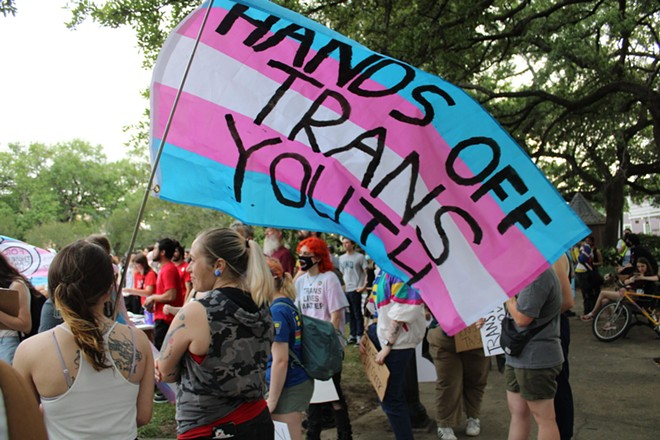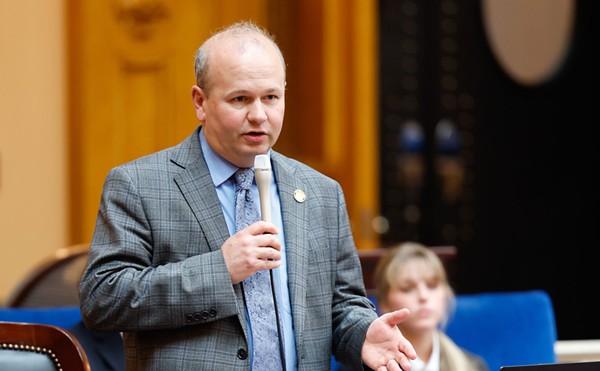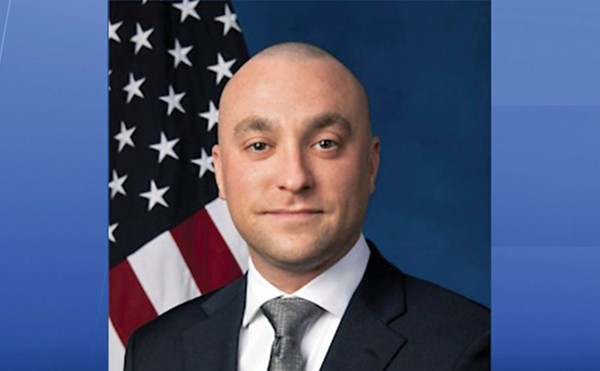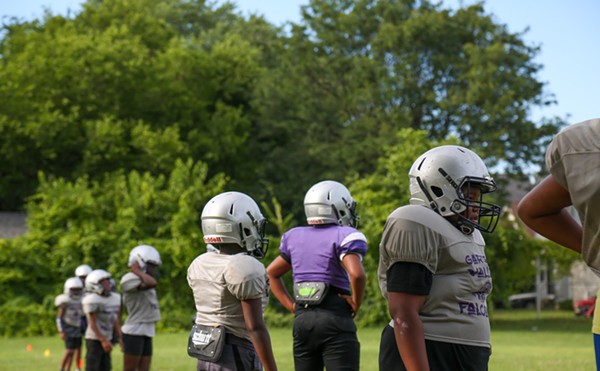
This story is about suicide. If you or someone you know needs support now, call or text 988 or chat 988lifeline.org.
Medical studies, national research, and local coalitions in Ohio all agree: suicide risks are higher in marginalized groups, including the LGBTQ+ community.
As Ohio awaits the fate of House Bill 68 — a bill to ban gender-affirming care in the state that has been vetoed by Gov. Mike DeWine but could have that veto overridden by the General Assembly — suicide prevention coalitions, mental health professionals and youth groups are all looking toward the future of the groups they serve, who could be negatively impacted by the bill.
“What is missing is the community care aspect of it,” said Erin Upchurch, executive director of Columbus’ Kaleidoscope Youth Center. “How we as adults in particular are creating a safer, more affirming world for our children, and lately we’re not doing a good job.”
Kaleidoscope has spoken out against HB 68 in several committee hearings and in public statements, and are among the hundreds to do so before the legislature passed the bill in December.
Opponents say the bill targets a small minority of kids, but could have a dangerous impact on adolescents trying to establish themselves in the world, or even on their decision to stay alive.
“When all (trans kids) are getting is messages that you don’t deserve to exist, that could make a kid say ‘that doesn’t make me feel good about my future,'” Upchurch said.
‘Internalized stigma’
A 2022 review of current research provided as a free guide by Nationwide Children’s Hospital’s Center for Suicide Prevention and Research, identifies internalized stigma, or self-judgment for going against what is considered societal “norms,” as “a major risk factor for adverse mental health outcomes in LGBQ youth,” according to researchers.
“Similar relationships have been observed in transgender and gender-diverse adults, with internalized transphobia associated with suicide attempts above and beyond other factors, according to the research analysis.
The concept of “rejection sensitivity,” or anticipation and avoidance of rejection by society was also considered a possible risk factor for “self-injurious thoughts and behaviors” or SITBs, which includes self-injury that’s not considered suicidal, along with suicidal ideation and attempts at suicide.
“In contrast, support from family members, friends and communities is protective for LGBTQIA+ individuals and may play a key role in reducing SITB risk,” the research stated.
“Family connectedness and adult caring are protective against suicidal ideation and attempts among LGB youth,” both at certain points of a child’s life and across time, the research stated.
In 2023, the LGBTQ advocacy group The Trevor Project released a U.S. National Survey on the Mental Health of LGBTQ Young People, studying those between the ages of 13 and 24. The survey found that, for the fifth year in a row, “anti-LGBTQ victimization contributes to the higher rates of suicide risk reported by LGBTQ young people and that most (56%) who want mental health care are unable to get it.”
The study showed that 41% of LGBTQ+ youth surveyed “seriously considered attempting suicide in the past year,” with higher rates reported for transgender and nonbinary individuals, along with people of color in those groups.
According to the study, nearly 1 in 3 American LGBTQ+ young people said they suffered from poor mental health “most of the time or always due to anti-LGBTQ policies and legislation.”
“Nearly 2 in 3 LGBTQ young people said that hearing about potential state or local laws banning people from discussing LGBTQ people at school made their mental health a lot worse,” the study stated.
A different piece of legislation, Ohio House Bill 8, would target “sexuality” content in schools, and would create a system in which schools would be required to notify parents of “changes in the health of the student” and the district would be barred from “encouraging the student to hide these issues from their parents.”
Opponents of that bill, including Ohio School Psychologists Association and the Ohio School Counselor Association, say the bill could create a chilling effect, causing a school counselor or psychologist to be seen not as a trusted safe space, but as a place of stress and fear.
“It ignores a solid body of research as to the dangers inherent in depriving a vulnerable population of needed psychological care and the potential for suicide because of it,” OSPA Executive Director Rachel Chilton told the Ohio Senate Education Committee in December.
Reaching the population
At the start of 2024, the Ohio Department of Health announced a total of $350,000 in grants going to seven suicide prevention coalitions in the state, paid through the Public Health Fund of Ohio.
Coalitions in Cuyahoga, Darke, Hamilton, Highland/Pike, Licking, Logan and Lucas counties received $50,000 each to use for “suicide prevention strategies and approaches aimed at helping youth and young adults ages 10 to 24 years,” according to the ODH’s announcement of the awards.
Some of those programs include specific resources for the LGBTQ+ communities, and the grant money will further the work in those areas. Cuyahoga County’s Suicide Prevention Coalition plans to partner with two groups in the area to target two particular groups: African American youth and LGBTQ+.
“We know from the research that’s out there that those two groups have a higher vulnerability and a higher risk for suicide,” said Mark Onusko, a behavioral health prevention specialist for Alcohol, Drug Addiction and Mental Health Services (ADAMHS) Board of Cuyahoga County.
Risk factors that play into the potential for youth suicide are experiences with “minority stress,” discrimination, and experiences of physical or emotional harm, or bullying, including cyberbullying, according to Onusko.
“When you recognize that there are disparities in terms of need, I think it’s important to let the population know what resources are already out there,” Onusko told the Capital Journal.
For Emily McConville and the Licking County Suicide Prevention Coalition, finding a new way to engage with young people could be the link the county needs to be able to prevent youth suicide.
So when applying for their grant, they pledged to develop an app tailored to that demographic, “providing immediate access to local prevention resources.”
“Recognizing the influential role teachers, coaches and community leaders play in the lives of young people, we intend to enhance current gatekeeper efforts, enabling them to identify at-risk youths and provide the necessary support or referrals so parents are equipped with the tools to recognize and respond to the signs of distress in their children,” the application read.
While the app is still a work in progress, McConville said as specific groups or specific needs for resources become apparent, the app could be updated to reflect what’s needed.
“What we should all agree on is that we should be protecting the livelihood of children,” McConville said.
Originally published by the Ohio Capital Journal. Republished here with permission.











